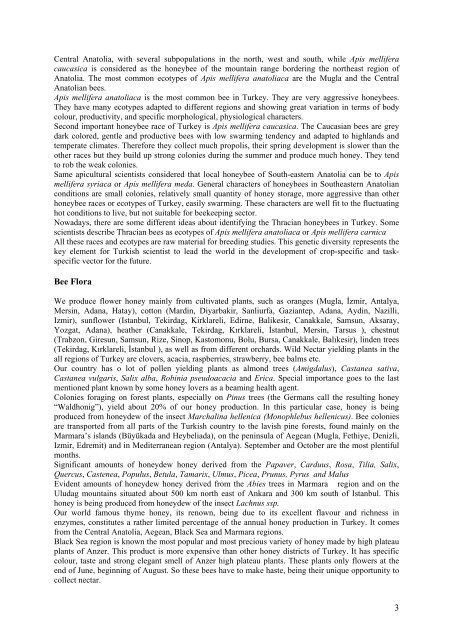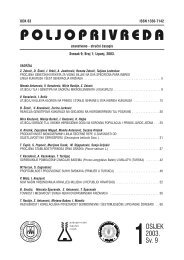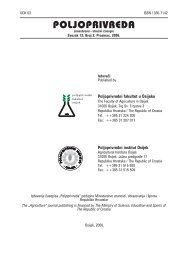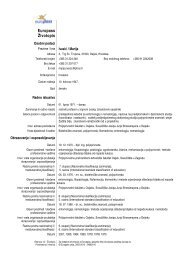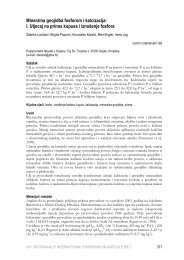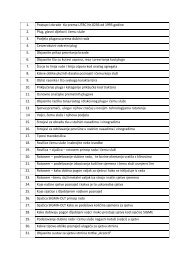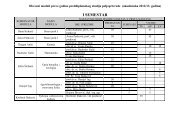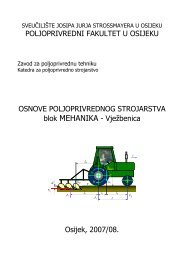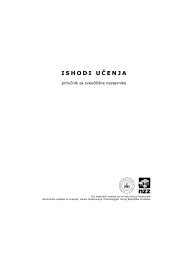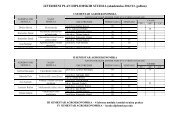1 THE GENERAL APICULTURAL SITUATION OF TURKEY ...
1 THE GENERAL APICULTURAL SITUATION OF TURKEY ...
1 THE GENERAL APICULTURAL SITUATION OF TURKEY ...
Create successful ePaper yourself
Turn your PDF publications into a flip-book with our unique Google optimized e-Paper software.
Central Anatolia, with several subpopulations in the north, west and south, while Apis mellifera<br />
caucasica is considered as the honeybee of the mountain range bordering the northeast region of<br />
Anatolia. The most common ecotypes of Apis mellifera anatoliaca are the Mugla and the Central<br />
Anatolian bees.<br />
Apis mellifera anatoliaca is the most common bee in Turkey. They are very aggressive honeybees.<br />
They have many ecotypes adapted to different regions and showing great variation in terms of body<br />
colour, productivity, and specific morphological, physiological characters.<br />
Second important honeybee race of Turkey is Apis mellifera caucasica. The Caucasian bees are grey<br />
dark colored, gentle and productive bees with low swarming tendency and adapted to highlands and<br />
temperate climates. Therefore they collect much propolis, their spring development is slower than the<br />
other races but they build up strong colonies during the summer and produce much honey. They tend<br />
to rob the weak colonies.<br />
Same apicultural scientists considered that local honeybee of South-eastern Anatolia can be to Apis<br />
mellifera syriaca or Apis mellifera meda. General characters of honeybees in Southeastern Anatolian<br />
conditions are small colonies, relatively small quantity of honey storage, more aggressive than other<br />
honeybee races or ecotypes of Turkey, easily swarming. These characters are well fit to the fluctuating<br />
hot conditions to live, but not suitable for beekeeping sector.<br />
Nowadays, there are some different ideas about identifying the Thracian honeybees in Turkey. Some<br />
scientists describe Thracian bees as ecotypes of Apis mellifera anatoliaca or Apis mellifera carnica<br />
All these races and ecotypes are raw material for breeding studies. This genetic diversity represents the<br />
key element for Turkish scientist to lead the world in the development of crop-specific and taskspecific<br />
vector for the future.<br />
Bee Flora<br />
We produce flower honey mainly from cultivated plants, such as oranges (Mugla, İzmir, Antalya,<br />
Mersin, Adana, Hatay), cotton (Mardin, Diyarbakir, Sanliurfa, Gaziantep, Adana, Aydin, Nazilli,<br />
Izmir), sunflower (Istanbul, Tekirdag, Kirklareli, Edirne, Balikesir, Canakkale, Samsun, Aksaray,<br />
Yozgat, Adana), heather (Canakkale, Tekirdag, Kırklareli, İstanbul, Mersin, Tarsus ), chestnut<br />
(Trabzon, Giresun, Samsun, Rize, Sinop, Kastomonu, Bolu, Bursa, Canakkale, Balıkesir), linden trees<br />
(Tekirdag, Kırklareli, İstanbul ), as well as from different orchards. Wild Nectar yielding plants in the<br />
all regions of Turkey are clovers, acacia, raspberries, strawberry, bee balms etc.<br />
Our country has o lot of pollen yielding plants as almond trees (Amigdalus), Castanea sativa,<br />
Castanea vulgaris, Salix alba, Robinia pseudoacacia and Erica. Special importance goes to the last<br />
mentioned plant known by some honey lovers as a beaming health agent.<br />
Colonies foraging on forest plants, especially on Pinus trees (the Germans call the resulting honey<br />
“Waldhonig”), yield about 20% of our honey production. In this particular case, honey is being<br />
produced from honeydew of the insect Marchalina hellenica (Monophlebus hellenicus). Bee colonies<br />
are transported from all parts of the Turkish country to the lavish pine forests, found mainly on the<br />
Marmara’s islands (Büyükada and Heybeliada), on the peninsula of Aegean (Mugla, Fethiye, Denizli,<br />
Izmir, Edremit) and in Mediterranean region (Antalya). September and October are the most plentiful<br />
months.<br />
Significant amounts of honeydew honey derived from the Papaver, Carduus, Rosa, Tilia, Salix,<br />
Quercus, Castenea, Populus, Betula, Tamarix, Ulmus, Picea, Prunus, Pyrus and Malus<br />
Evident amounts of honeydew honey derived from the Abies trees in Marmara region and on the<br />
Uludag mountains situated about 500 km north east of Ankara and 300 km south of Istanbul. This<br />
honey is being produced from honeydew of the insect Lachnus ssp.<br />
Our world famous thyme honey, its renown, being due to its excellent flavour and richness in<br />
enzymes, constitutes a rather limited percentage of the annual honey production in Turkey. It comes<br />
from the Central Anatolia, Aegean, Black Sea and Marmara regions.<br />
Black Sea region is known the most popular and most precious variety of honey made by high plateau<br />
plants of Anzer. This product is more expensive than other honey districts of Turkey. It has specific<br />
colour, taste and strong elegant smell of Anzer high plateau plants. These plants only flowers at the<br />
end of June, beginning of August. So these bees have to make haste, being their unique opportunity to<br />
collect nectar.<br />
3


